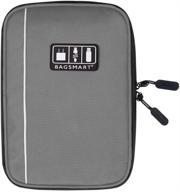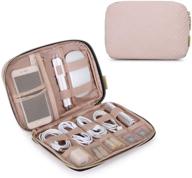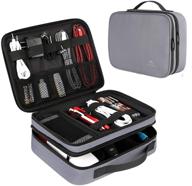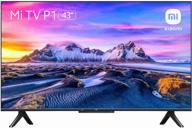
Review on 📱 MX-450 Universal Remote Control: Programmable with On-Screen Macro Editing Capability for Customized Operation by Cornelius Mosley

Great remote control! But what is a macro?
great remote control. Pair it with the MRF-260 base station (see my review) and you have the most affordable radio control system on the market. The only complaint I've ever had with the remote is that you can't learn commands for the hardware buttons. I understand that this sets the next model apart, but nothing is without criticism. The instructions are not user friendly in the sense that all they say are buttons inserted in batteries and a software remote control and then phew! Here's a quick and dirty tutorial for those who want to buy a remote control but are afraid of programming. Walk through the basic setup. To do this, you need to tell the remote what brand of TV, receiver, cable box, Blu-ray, etc. you have and test a series of codes. It is important that all the functions you need work in these basic tests or more advanced macros, there would be nothing to work with. The most important features to test on your TV are usually performance, input, and aspect ratio. On the receiver, these are any inputs you use, regardless of naming or volume conventions. Blu-ray and DVD players are usually already in the remote control. If you need to learn a specific button, do so in the Learn section of the main settings. There are on-screen instructions describing the process. This is necessary, if you find a code set that is on but doesn't say "Enter", just teach it the Enter key from your original TV/receiver remote. Make sure the button/function you are looking for is not a soft button on the 2nd or 3rd page of the remote control screen. When adding devices, place the TV and receiver on the left side of the remote control screen. Add any device, including gaming systems, even if you don't have an adapter to actually control the device with a remote, say Xbox or Wii. correct input to play the specified device. I put my cable/satellite in the top right corner of the screen, then the DVD/Bluray, then the gaming systems. The reason for placing the TV and receiver on the left is so that after we've used them to program macros we can hide them since we never really choose to watch TV, it's more like we would we watch cable TV from Verizon or Comcast, Play Wii, etc. When naming a device, add "Watch" or "Play" to the device name so you can run an event, e.g. B. adding a Comcast cable box. I would name it "Watch Comcast" as the device name. Copy and paste the volume. This means that the volume is always controlled by either the TV or the receiver. So if you're in Watch Cable or Play wii, pressing volume controls that device. The process is to copy and paste from the menu, select the volume, then any devices BY EVER using the TV or AV receiver speakers. Advanced settings / enable / disable MacrosMaster for all devices on the main screen. In fact, the first 2 macros to program are all devices to toggle hardware buttons on and off. They are located on the top left and right of the remote control. Navigate to the macro menu and when you're done you'll see a "Start macro, click Done" message (at the bottom of the screen). You'll also notice a flashing red dot, similar to the record button, at the top of the screen when you're in training mode. Learning a macro is just remotely remembering some steps you just took to complete a task and repeating them when you press a specific key. Go to the "Macro” section and start recording by pressing the "On” hardware button. (located in the upper-left corner of the remote), now view all the devices you've added by selecting them one at a time and from the Devices menu press the Power button and then "Main". to return to the main menu. The devices to be added to this All-On command are the essential devices of your device, ie. TV, projector, cable TV, receiver. I usually leave the Bluray/DVD On command on the macro I create when I want to show this device. There's no harm in leaving your cable box on, but if you leave your DVD player on and spin the disc to keep it in the menu for hours (while watching cable) it will quit prematurely. Repeat the process for the off button. The same exception applies to DVDs in the shutdown macro. I make a shutdown command for DVD in the device menu, when you press "Menu" to return to the main menu on the remote from watching a DVD, the DVD player turns off. Test and tweak it to turn all your main devices on and off the way you want. Now that we can press ON from the main menu and turn on things like the TV, cable box and receiver, we can proceed to programming event macros. on the screen. Write it down on a piece of paper, making sure to find and check all the keys required for the right code. Here is an example. Let's say we want to look at our Verizon Cablebox. Everything is already switched on so we can make sure that the TV is connected to the correct input. We say "Input 3", we make sure our Denon AV receiver is set to the input cable or the other input connected. . So in the macro section we start the recording by selecting the Watch Verizon button on the main screen, then clicking on Home to return to the main menu, then selecting the TV and clicking on the appropriate button to enter 3 and then clicking on Home, then select your Denon receiver and press the Cable In button, then press Main and press the Watch Verizon button again, then press Done. This causes that when you press the "View Verizon" button in the main menu, everything switches to the correct input and the remote stops when dialing the Verizon code, which has all the functionality of the original Verizon remote, such as Guide, Cursor functions. and Page+/Page- etc. Repeat this process for all devices. After setting up and testing when you click on "Observe". it goes to all the correct inputs and stops at that device's original code set. The reason we don't program everything to turn on and off independently is because if you toggle between, for example, "Play PS3" and "Watch Verizon," you have to turn everything off, wait a second, and then turn it back on . If you are happy with the macros, go to the Hide/Add Pages section. We want to hide the TV and receiver from the main menu, since strangers can choose them and get confused. "I click TV but nothing happens" because it just refers to a set of TV codes where "Watch Verizon" is what you have to press to watch TV. Add aspect ratio control to events by clicking the explore button. in the device. Get to know the aspect ratio/size button from your TV remote control for all your devices. So if you're watching a standard definition TV and you've stretched your aspect ratio to fill the screen (i.e. no black bars on the sides) and then switch to something in HD, you'll have a 'format/size' for all devices straight away . With some TVs that auto-stretch, this isn't necessary. Operation is easy. When everything is off, grab the remote and press "On" (top left), everything should turn on (TV, receiver, cable box, etc.). You are in the main menu on the remote control. Click the appropriate button for the event you wish to host, e.g. B. Watch Verizon. When you're done and want to turn off the system, press Main to go to the main menu and press Off. (top right). So far, this process is done every time you enter the room to watch TV and the remote control should appear on the main screen and the macro ON turns everything on. When the device stays on but everything else turns off, or vice versa. Set everything to a state, either turn it on or off, then just select that event/device on the main screen and when you're in that device's menu, depending on the state of the rest, press "On- or switch off". Gear. This is a simple example to get you started and thinking in terms of macros. There are sites that talk about other, more advanced ways of sorting things into locations and zones. The difference between hardware and software keys is that the hardware keys are fixed, e.g. B. Manual, Exit, Menu. They have their name printed right on them and they are considered hard buttons. The soft buttons are located on the remote screen and are editable, which is why they are called soft buttons.
- audio and video accessories
- unreliable
New products
Comments (0)
Top products in 🎧 Audio & Video Accessories
Another interesting products

🔌 BAGSMART Small Travel Cable Organizer Bag for Electronics: Hard Drives, Cables, USB, SD Card - Black

3 Review

👜 BAGSMART Electronic Organizer: Travel in Style with Universal Cable Organizer for Electronics Accessories - Grey"

3 Review

BAGSMART Small Travel Cable Organizer Bag - Electronic Organizer for Hard Drives, Cables, Charger, Phone, USB, SD Card - Soft Pink

4 Review

🔌 Cord Organizer Bag: Travel-Friendly Cable Organizer Case for Small Electronic Accessories - Durable, Portable, and Stylish in Grey

5 Review





